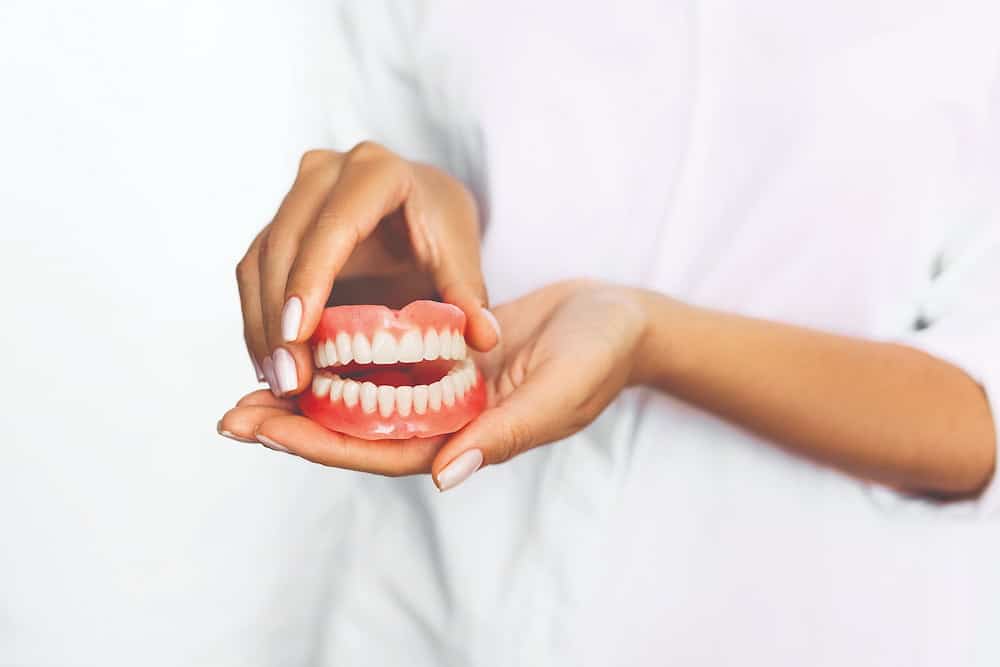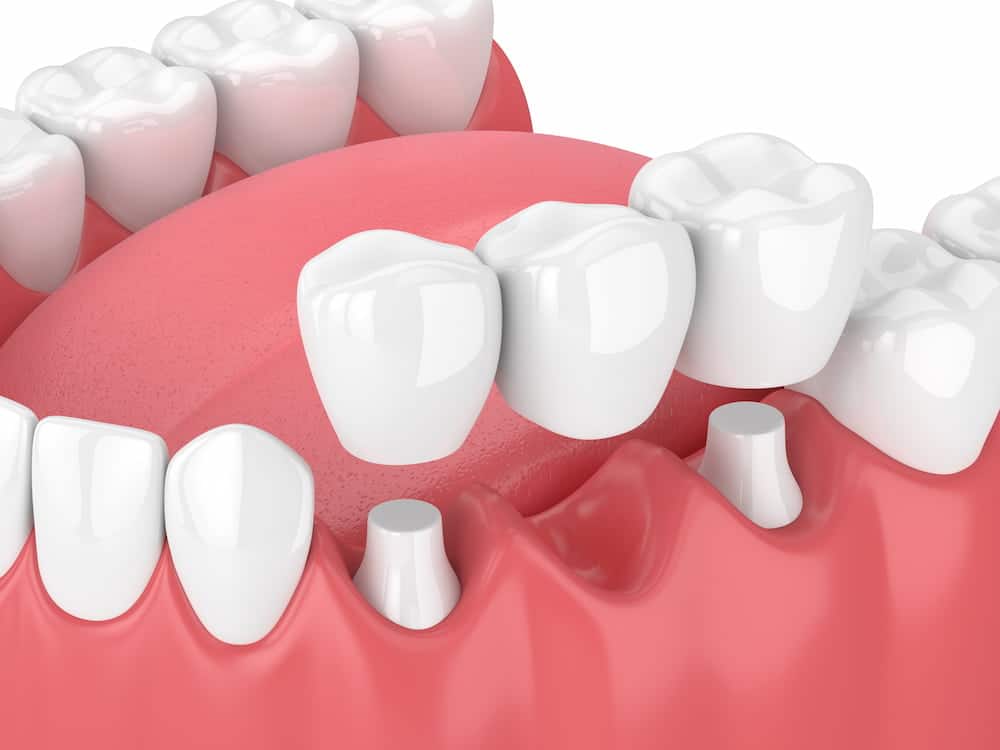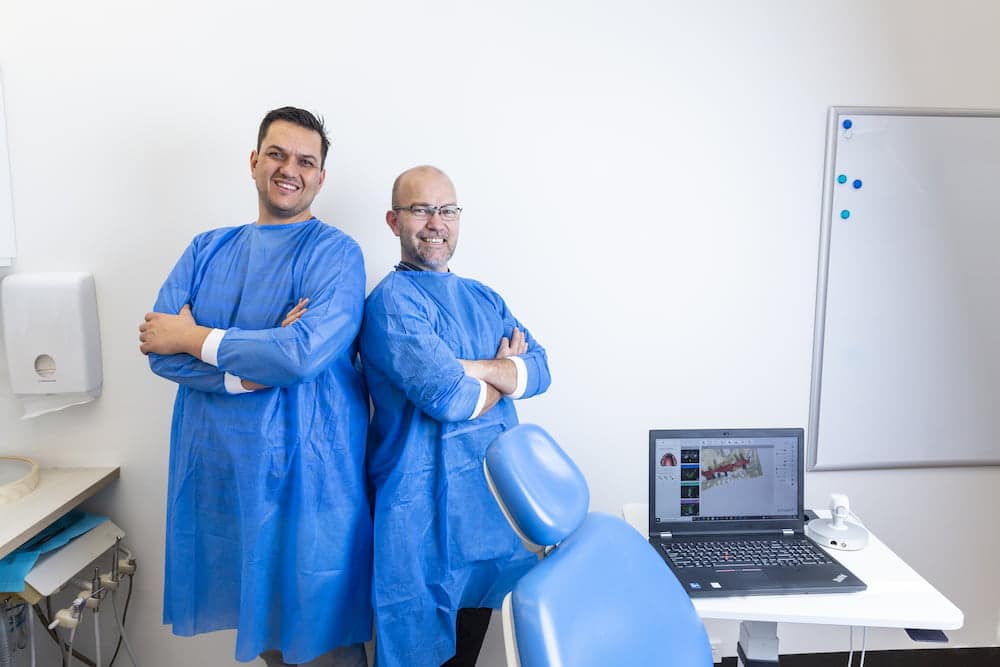With Dr Garth Jones, Implant Surgeon at Affordable Implants and Dentures in Phillip.
I frequently have people with missing teeth sit in my dental chair asking whether they should have an implant or a denture? It’s an important question and one that needs to be answered individually for each patient. With the rate of tooth loss in Australia, particularly with over-50s, this question requires a considered response.
So why fill a gap?
The first question you may ask is why should you fill the gap made by a missing tooth? If you have a missing tooth and don’t do anything about the gap, what may happen is:
- the teeth on either side of the gap may drift into the space made by the missing tooth, opening other gaps elsewhere in your smile
- the tooth opposite to the missing tooth space may continue to grow as it no longer has anything to touch or bite against (heard of the saying long in the tooth?)
- the bone can shrink because there is no tooth in the space to bite on, which helps to strengthen and retain the bone.
How can I fill a gap?
In short, there are four main options for tooth replacement in modern dentistry. These include:
- a denture
- a bridge
- an implant
- or do nothing at all.




I recently saw lady in her late 50s who was missing an upper tooth. Whilst the missing tooth was not one of her front teeth, it was close enough to the front that there was a noticeable gap when she spoke, ate food, opened her mouth, and smiled. She was quite self-conscious of this and said she was avoiding going out to social events, even to the shops because she was embarrassed that someone might see she had a missing tooth.


What do I need to consider when deciding how to fill my gap?
Apart from doing nothing, as previously mentioned, the options available to someone who has lost a tooth are to get: 1. a denture, 2. a bridge, or 3. an implant. Outlined below is an overview of these three options, and for the purposes of this exercise, I have assumed that all three options are appropriate for the particular person.
- Treatment Type: Denture
Price: $800 to $1800 (type dependent)
Lifecycle: 5 to 10 years (type dependent)
Number of appointments: 2 – 3
Pros: Cost effective
Cons: Having this type of appliance can be bulky, and may cause gum irritations or sore spots
Tip: Visit a practice that does digital scans to avoid the gooey impression trays. Our practice is fully digital, meaning no gooey impressions are needed. You will see how much nicer it can be!
- Treatment Type: A 3 Tooth Bridge
Price: $4000 – $6500 (material dependent)
Lifecycle: 15 to 25 years (with good hygiene and no underlying dental conditions)
Number of appointments: 2
Pros: Fast and fixed solution to missing tooth
Cons: Healthy teeth may be required to be ‘cut down’ to accommodate and support the bridge (a consideration where an implant is also an option).
Tips: As with dentures, digital scans are the fastest and most accurate way to complete a bridge. You should also ask your dentist whether their crowns and bridges are made in Australia, as most are made in China these days. Our practice only uses locally made Australian crowns and bridges.
- Treatment Type: Implant
Price per implant: Stage 1 (inserting implant): $2000-$3000, Stage 2 (inserting implant crown happens 3 to 4 months after stage 1): $2000- $2500
Lifecycle: 17 to 27 years (with good hygiene)
How Many appointments: 3
Duration to finish: 3 to 4 months
Pros: No harm to surrounding teeth and the most tooth-like replacement available
Cons: Very few drawbacks if bone is suitable
Tips: Ask your dentist if they use digital guides to do their surgery. Digital is the nicest way to do surgery nowadays and technology is only getting better and better!
So how did my patient fill her gap?
The lady I mentioned earlier made the decision to choose option 3, an implant. She made this decision because she hadn’t left the gap there very long so there was plenty of bone for an implant, and she was reluctant to have a bridge because of the need to cut into the surrounding teeth. She didn’t want a denture as she felt it was too “weird” having something that comes in and out and didn’t want to think about it.
The process she underwent for an implant was to:
- Have a digital scan of the mouth and a 3D Xray called a Cone Beam CT.
- We then used these scans to plan and map placement of the implant into the bone on the computer to choose the best position within the bone so the tooth that sits on top of the implant is in the ideal position.
- Once we had determined the best position for the implant, we use a 3D printer to print what’s called a Surgical Guide, which is a little device that guides the dentist to make sure the implant is placed where they decided it would be when they were mapping it on the computer. This process guides the dentist for an improved dental implant position.
- After waiting a few months for the implant to heal in the bone, another scan is done to make sure the final implant crown is fixed in the right way to the implant, then the implant crown is inserted.
- The final step is to have regular hygiene visits to the dentist to maintain healthy teeth and implants.
For my patient, the implant surgery took less than one hour and was done using local anaesthetic. She was really surprised how quick and easy the procedure was and appreciated us using the digital technology and an Australian made crown.
So, let’s get to the ‘tooth’ of the matter: understand the options to fill your gap before your options (and bone) run out!
– Dr Garth Jones
If you would like a free tooth replacement consultation to see what solution would best fit your needs, please contact Affordable Implants and Dentures in Phillip on 6190 8828.
For more information on sponsored partnerships, click here.



